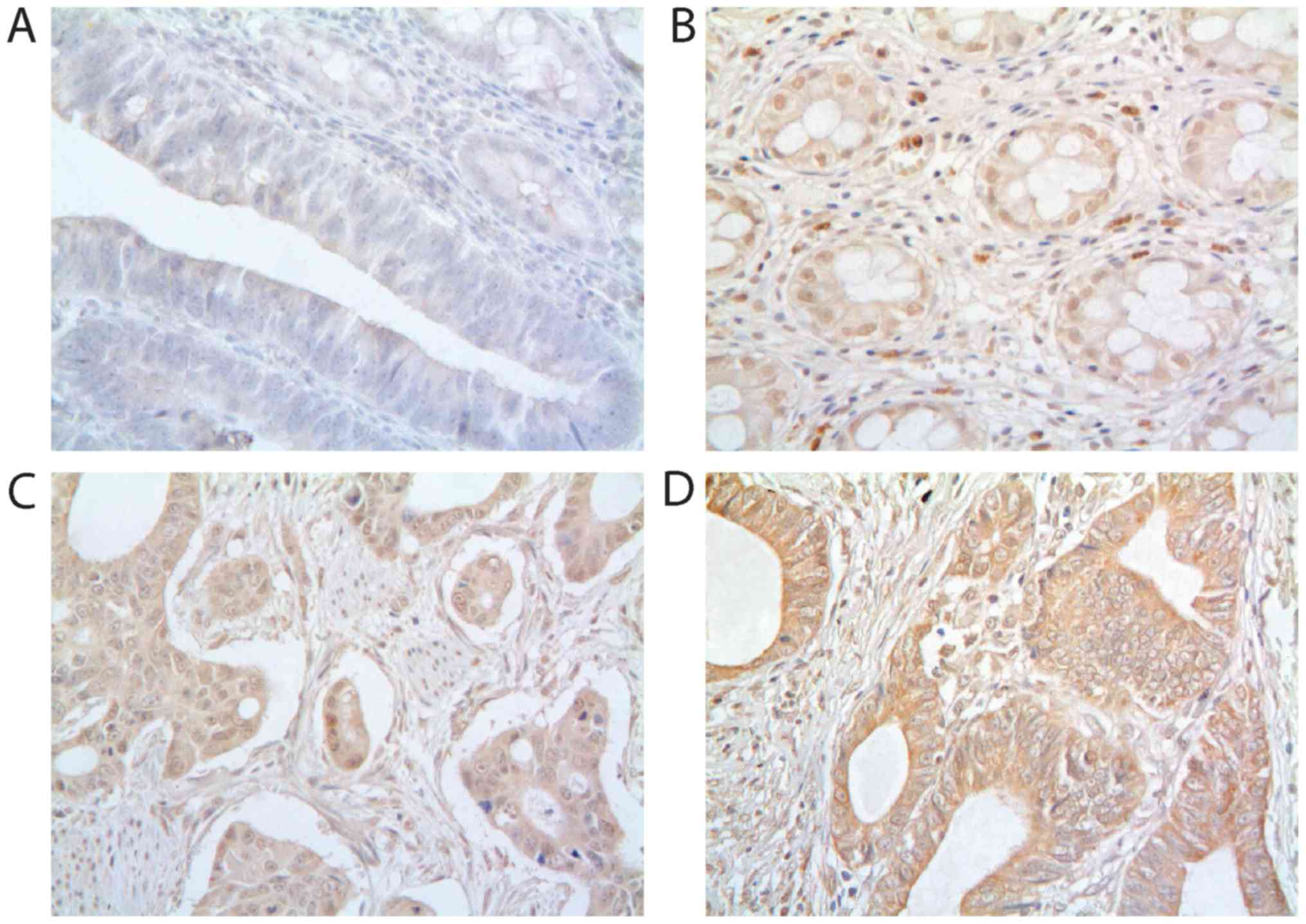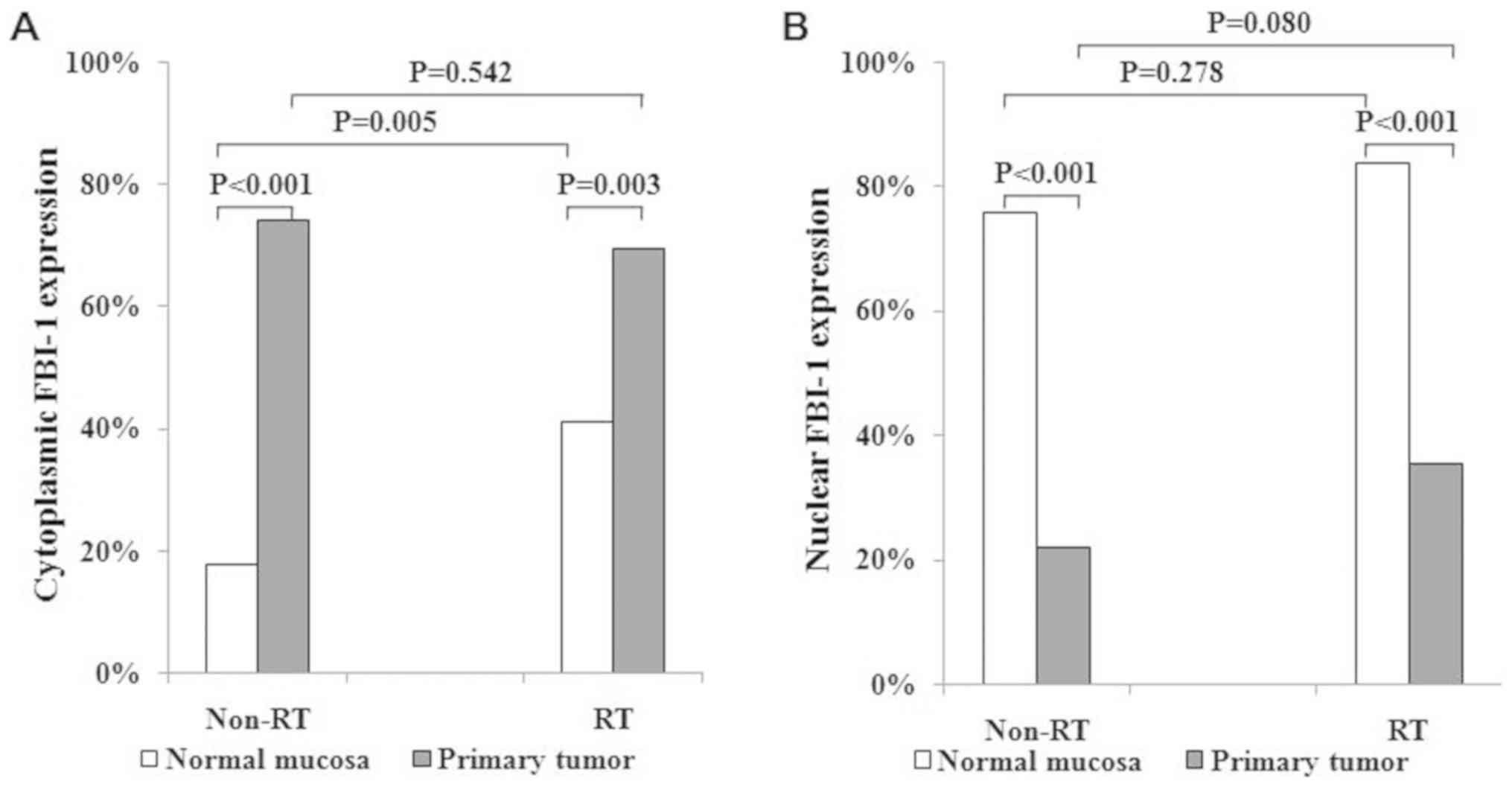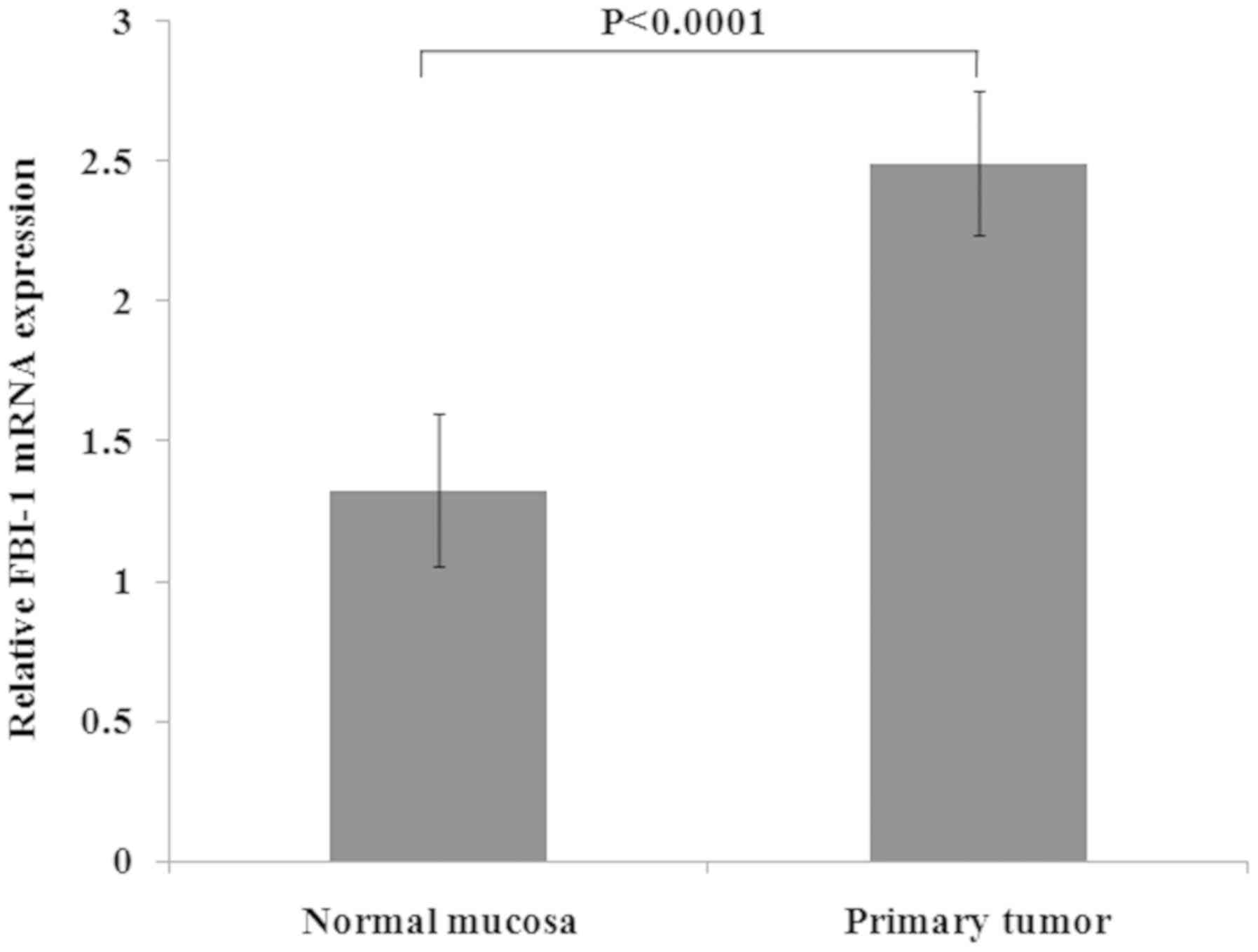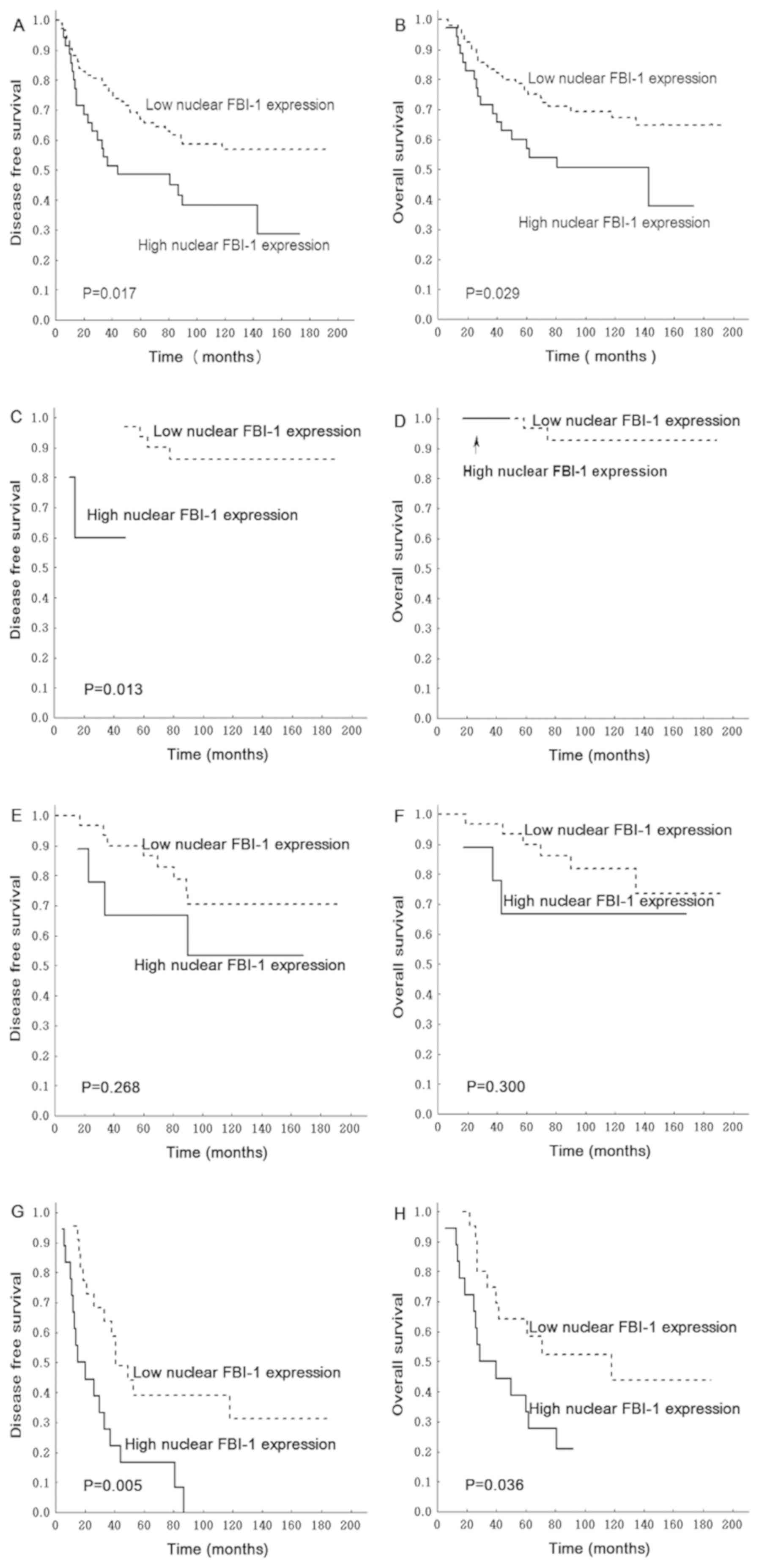|
1
|
Yang Y, Li Y, Di F, Cui J, Wang Y and
David Xu ZQ: Pokemon decreases the transcriptional activity of RARα
in the absence of ligand. Biol Chem. 398:331–340. 2016. View Article : Google Scholar
|
|
2
|
Maeda T, Hobbs RM, Merghoub T, Guernah I,
Zelent A, Cordon-Cardo C, Teruya-Feldstein J and Pandolfi PP: Role
of the proto-oncogene Pokemon in cellular transformation and ARF
repression. Nature. 433:278–285. 2005. View Article : Google Scholar : PubMed/NCBI
|
|
3
|
Wang L, Li Q, Ye Z and Qiao B:
Pokemon/miR-137 auto-regulatory circuit promotes the progression of
renal carcinoma. Oncol Res. Apr 19–2018.doi:
10.3727/096504018X15231148037228, (Epub ahead of print).
|
|
4
|
Jiang L, Siu MK, Wong OG, Tam KF, Lam EW,
Ngan HY, Le XF, Wong ES, Chan HY and Cheung AN: Overexpression of
proto-oncogene FBI-1 activates membrane type 1 matrix
metalloproteinase in association with adverse outcome in ovarian
cancers. Mol Cancer. 9:3182010. View Article : Google Scholar : PubMed/NCBI
|
|
5
|
Fang F, Yang L, Tao Y and Qin W: FBI-1
promotes cell proliferation and enhances resistance to chemotherapy
of hepatocellular carcinoma in vitro and in vivo. Cancer.
118:134–146. 2012. View Article : Google Scholar : PubMed/NCBI
|
|
6
|
Zhao ZH, Wang SF, Yu L, Wang J, Chang H,
Yan WL, Zhang J and Fu K: Overexpression of Pokemon in non-small
cell lung cancer and foreshowing tumor biological behavior as well
as clinical results. Lung Cancer. 62:113–119. 2008. View Article : Google Scholar : PubMed/NCBI
|
|
7
|
Zhao Z, Wang J, Wang S, Chang H, Zhang T
and Qu J: LncRNA CCAT2 promotes tumorigenesis by over-expressed
Pokemon in non-small cell lung cancer. Biomed Pharmacother.
87:692–697. 2017. View Article : Google Scholar : PubMed/NCBI
|
|
8
|
Yi TJ and Wang P: The expression of
Pokemon in endometrial carcinoma tissue and the correlation with
mutant p53. Sichuan Da Xue Xue Bao Yi Xue Ban. 47:321–325. 2016.(In
Chinese). PubMed/NCBI
|
|
9
|
Jiao W, Liu F, Tang FZ, Lan J, Xiao RP,
Chen XZ, Ye HL and Cai YL: Expression of the Pokemon proto-oncogene
in nasopharyngeal carcinoma cell lines and tissues. Asian Pac J
Cancer Prev. 14:6315–6319. 2013. View Article : Google Scholar : PubMed/NCBI
|
|
10
|
Aggarwal H, Aggarwal A, Hunter WJ III,
Yohannes P, Khan AU and Agrawal DK: Expression of leukemia/lymphoma
related factor (LRF/Pokemon) in human benign prostate hyperplasia
and prostate cancer. Exp Mol Pathol. 90:226–230. 2011. View Article : Google Scholar : PubMed/NCBI
|
|
11
|
Zu X, Ma J, Liu H, Liu F, Tan C, Yu L,
Wang J, Xie Z, Cao D and Jiang Y: Pro-oncogene Pokemon promotes
breast cancer progression by upregulating survivin expression.
Breast Cancer Res. 13:R262011. View
Article : Google Scholar : PubMed/NCBI
|
|
12
|
Sartini D, Lo Muzio L, Morganti S, Pozzi
V, Di Ruscio G, Rocchetti R, Rubini C, Santarelli A and Emanuelli
M: Pokemon proto-oncogene in oral cancer: Potential role in the
early phase of tumorigenesis. Oral Dis. 21:462–469. 2015.
View Article : Google Scholar : PubMed/NCBI
|
|
13
|
Zhu M, Li M, Zhang F, Feng F, Chen W, Yang
Y, Cui J, Zhang D and Linghu E: FBI-1 enhances ETS-1 signaling
activity and promotes proliferation of human colorectal carcinoma
cells. PLoS One. 9:e980412014. View Article : Google Scholar : PubMed/NCBI
|
|
14
|
Zhao Y, Yao YH, Li L, An WF, Chen HZ, Sun
LP, Kang HX, Wang S and Hu XR: Pokemon enhances proliferation, cell
cycle progression and anti-apoptosis activity of colorectal
independently of p14ARF-MDM2-p53 pathway. Med Oncol. 31:2882014.
View Article : Google Scholar : PubMed/NCBI
|
|
15
|
Kim SW, Yu K, Shin KS, Kwon K, Hwang TS
and Kwon OY: Low-dose radiation suppresses Pokemon expression under
hypoxic conditions. Z Naturforsch C. 69:68–74. 2014. View Article : Google Scholar : PubMed/NCBI
|
|
16
|
De Rosa M, Pace U, Rega D, Costabile V,
Duraturo F, Izzo P and Delrio P: Genetics, diagnosis and management
of colorectal cancer (Review). Oncol Rep. 34:1087–1096. 2015.
View Article : Google Scholar : PubMed/NCBI
|
|
17
|
Wang X, Zheng B, Lu X, Bai R, Feng L, Wang
Q, Zhao Y and He S: Preoperative short-course radiotherapy and
long-course radiochemotherapy for locally advanced rectal cancer:
Meta-analysis with trial sequential analysis of long-term survival
data. PLoS One. 13:e02001422018. View Article : Google Scholar : PubMed/NCBI
|
|
18
|
Hermanek P and Sobin LH: TNM
Classification of Malignant Tumours4th. Geneva: International Union
Against Cancer; 1987
|
|
19
|
Pfeifer D, Gao J, Adell G and Sun XF:
Expression of the p73 protein in rectal cancers with or without
preoperative radiotherapy. Int J Radiat Oncol Biol Phys.
65:1143–1148. 2006. View Article : Google Scholar : PubMed/NCBI
|
|
20
|
Yang L, Zhang H, Zhou ZG, Yan H, Adell G
and Sun XF: Biological function and prognostic significance of
peroxisome proliferator-activated receptor δ in rectal cancer. Clin
Cancer Res. 17:3760–3770. 2011. View Article : Google Scholar : PubMed/NCBI
|
|
21
|
Zhang H, Wang DW, Adell G and Sun XF:
WRAP53 is an independent prognostic factor in rectal cancer- a
study of Swedish clinical trial of preoperative radiotherapy in RC
patients. BMC Cancer. 12:2942012. View Article : Google Scholar : PubMed/NCBI
|
|
22
|
Liu N, Cox TR, Cui W, Adell G, Holmlund B,
Ping J, Jarlsfelt I, Erler JT and Sun XF: Nuclear expression of
lysyl oxidase enzyme is an independent prognostic factor in rectal
cancer patients. Oncotarget. 8:60015–60024. 2016.PubMed/NCBI
|
|
23
|
Livak KJ and Schmittgen TD: Analysis of
relative gene expression data using real-time quantitative PCR and
the 2(-Delta Delta C(T)) method. Methods. 25:402–408. 2001.
View Article : Google Scholar : PubMed/NCBI
|
|
24
|
Choi WI, Jeon BN, Yun CO, Kim PH, Kim SE,
Choi KY, Kim SH and Hur MW: Proto-oncogene FBI-1 represses
transcription of p21CIP1 by inhibition of transcription activation
by p53 and Sp1. J Biol Chem. 284:12633–12644. 2009. View Article : Google Scholar : PubMed/NCBI
|
|
25
|
Lin CC, Zhou JP, Liu YP, Liu JJ, Yang XN,
Jazag A, Zhang ZP, Guleng B and Ren JL: The silencing of Pokemon
attenuates the proliferation of hepatocellular carcinoma cells in
vitro and in vivo by inhibiting the PI3K/Akt pathway. PLoS One.
7:e519162012. View Article : Google Scholar : PubMed/NCBI
|
|
26
|
Ichimasa K, Kudo SE, Miyachi H, Kouyama Y,
Hayashi T, Wakamura K, Hisayuki T, Kudo T, Misawa M, Mori Y, et al:
Comparative clinicopathological characteristics of colon and rectal
T1 carcinoma. Oncol Lett. 13:805–810. 2017. View Article : Google Scholar : PubMed/NCBI
|
|
27
|
Tamas K, Walenkamp AM, de Vries EG, van
Vugt MA, Beets-Tan RG, van Etten B, de Groot DJ and Hospers GA:
Rectal and colon cancer: Not just a different anatomic site. Cancer
Treat Rev. 41:671–679. 2015. View Article : Google Scholar : PubMed/NCBI
|
|
28
|
Maeda T, Hobbs RM and Pandolfi PP: The
transcription factor Pokemon: A new key player in cancer
pathogenesis. Cancer Res. 65:8575–8578. 2005. View Article : Google Scholar : PubMed/NCBI
|
|
29
|
Mak VC, Wong OG, Siu MK, Wong ES, Ng WY,
Wong RW, Chan KK, Ngan HY and Cheung AN: FBI-1 is overexpressed in
gestational trophoblastic disease and promotes tumor growth and
cell aggressiveness of choriocarcinoma via PI3K/Akt signaling. Am J
Pathol. 185:2038–2048. 2015. View Article : Google Scholar : PubMed/NCBI
|
|
30
|
Yang Y, Cui J, Xue F, Zhang C, Mei Z, Wang
Y, Bi M, Shan D, Meredith A, Li H and Xu ZQ: Pokemon (FBI-1)
interacts with Smad4 to repress TGF-β-induced transcriptional
responses. Biochim Biophys Acta. 1849:270–281. 2015. View Article : Google Scholar : PubMed/NCBI
|
|
31
|
Kong J, Liu X, Li X, Wu J, Wu N, Chen J
and Fang F: Pokemon promotes the invasiveness of hepatocellular
carcinoma by enhancing MEF2D transcription. Hepatol Int.
10:493–500. 2016. View Article : Google Scholar : PubMed/NCBI
|


















